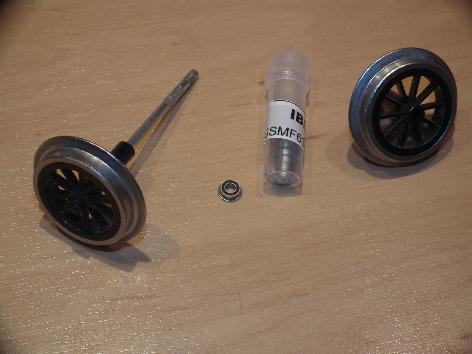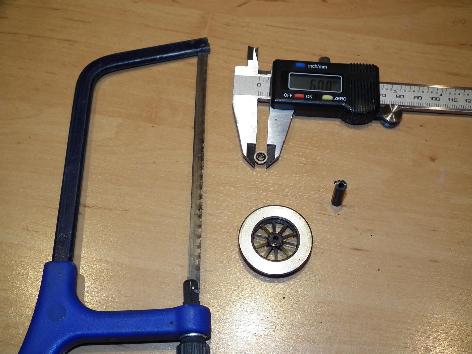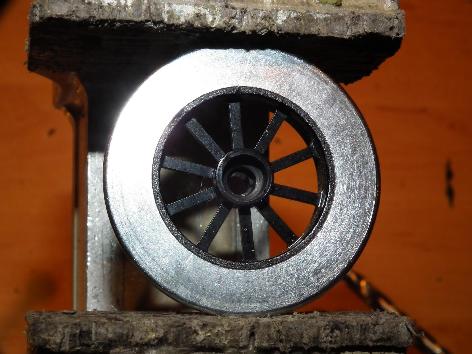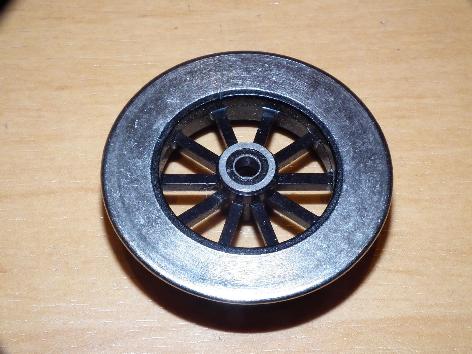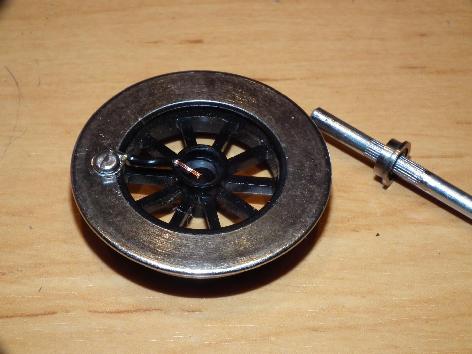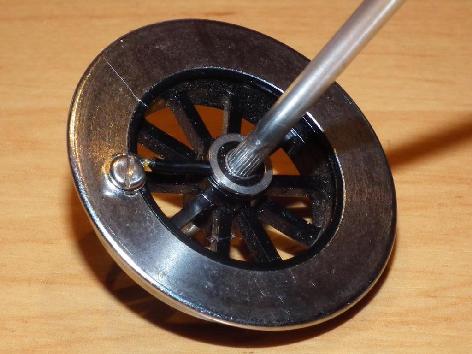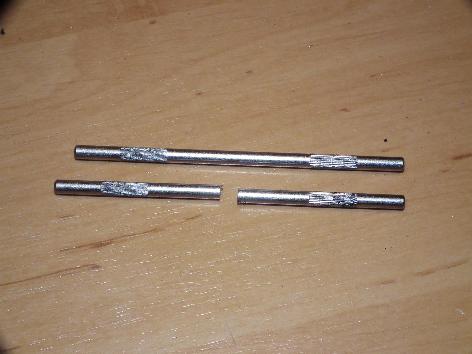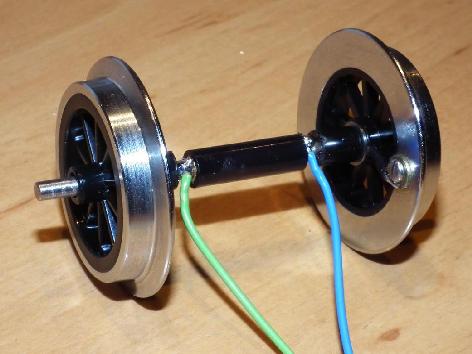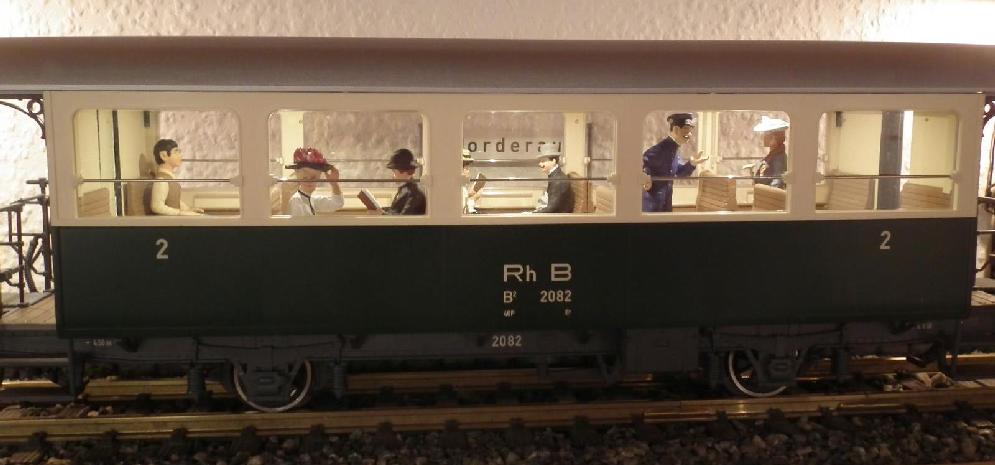Katzhagen - Archive - January 2017
A pantograph drive retrofit
can be applied to LGB vehicles which are lacking those drives and have the dummies only - like f.i. the BR 101 (LGB 20310 et al.) - quite easily.
The correspondent dummy units putting the pantographs under mechanical tension with a simple spring can be replaced with the motorized units featuring a limit switch without much ado. The latter can be found in the known online auction place now and then for more or less little money.
The retrofit requires a little circuitry which provides for a correct behaviour of the pantographs during operations.
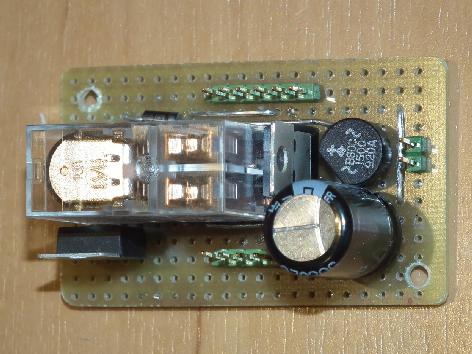
This board provides for mutual raising and lowering of both the pantographs according to the train's direction starting at 5 volts.
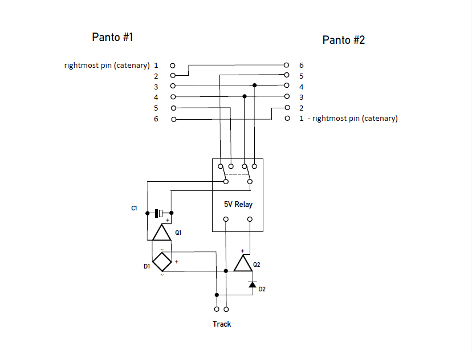
The circuitry can be used in both analogue and digital operations. In digital operations it is connected to a motor's terminals instead of the track's ones. Parts list
This simple technolgy also provides for a slower raising and lowering of the pantographs than known from the "flyswatters".
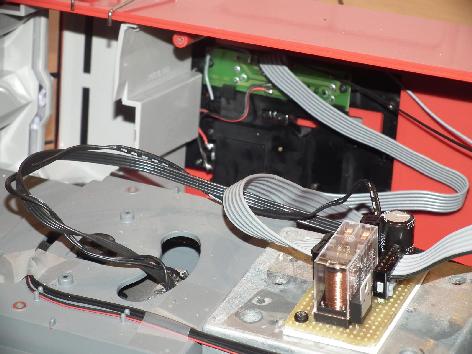
Given there is more than plenty of space inside the bodyshell, it's no problem at all to mount the little board and to replace the dummies with the drives.
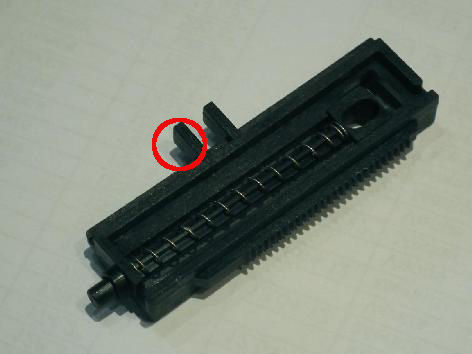
A construction-conditioned factor may cause the spring-loaded slider shown in this picture to get stuck due to a limit switch getting triggered too late. Remedy can be found by either adjusting the lever of the affected limit switch or by applying a small piece of plastic (1-2mm thick) in the marked position.
Spoked wheels with power pickup
Since no reasonable spoked wheels featuring a power pickup could be found at the known manufacturers and some passenger coaches equipped with spoked wheels were subject to get an illumination, a related self-construction was inevitable.
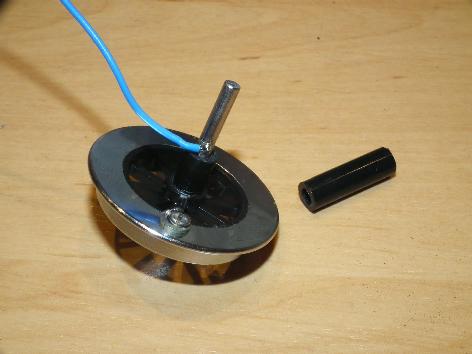
Both of the axle's halves need to be reconnected using the hollow shaft which had been cut off previously after soldering wires to each of the axle's halves.

